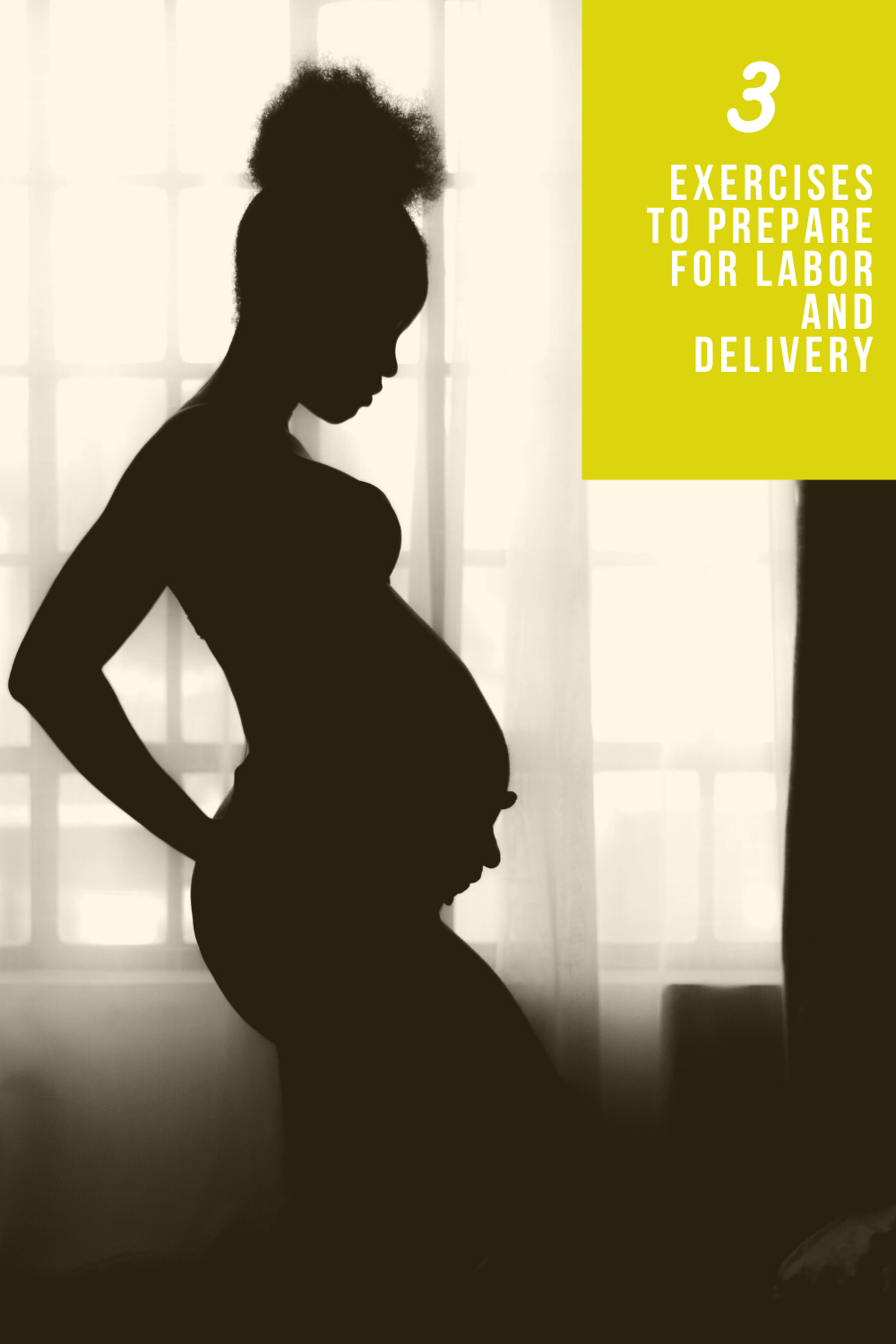Exercises to prepare for birth
by Camylla Battani
One question I get asked a lot is “what exercises should I do to prepare for birth?”
There are a few important things to remember in as you prepare for birth. The first is that birth is a normal and natural process for your body. This is the first time you have given birth, but your body does know what to do. It can feel scary, especially after watching hundreds of movies where women are screaming in terror or where birth does not go as planned, but the truth of it is that your body is designed to do this and the vast majority of births will end with a healthy baby and healthy mom even without any medical intervention. That being said, birth is a major event psychologically and physically, and you can do some exercises to make birth easier on your body.
Exercises to prepare for delivery:
The first set of exercises that I recommend are for helping you build awareness of your pelvic floor and core, and to train your body for the birth itself. These exercises are for the end of pregnancy as you prepare to deliver, some may be good to perform throughout, but most are really just for tuning in to your body.
Pelvic floor contractions (and relaxations):
I do not believe that women need to do isolated pelvic floor contractions daily, but doing pelvic floor contractions and relaxations can be used to gain awareness which is vital to smooth recovery. In late pregnancy, early postpartum, or whenever a woman determines she has a pelvic floor issue and seeks treatment awareness is a vital first step to developing control and strength. Every pregnant woman should have an understanding of where their pelvic floor is and how to both contract and relax these muscles. Being able to maintain relaxation during delivery, even in pain and under stress, reduces risk of tearing. After delivery, many women have less sensation to the pelvic floor muscles due to the stretching experienced and possible tearing. When performing isolated pelvic floor contractions, you want to feel the opening of the vagina close and lift up. If performed in sitting, you should feel your pelvic floor lift off the surface you are sitting on. When you relax, you should feel the pelvic floor muscles drop back down fully. You should not feel your glutes (butt muscles), adductors (inner thigh muscles), or back muscles contracting too. You should feel some muscle activity in your lower abdominal muscles.
Need to know how to do a pelvic floor contraction? Check out this video on how I teach pelvic floor isolation exercises.
Once you are 35 weeks, try doing 5 pelvic floor contractions 3 times per day
Perineal massage:
Perineal massage is a technique to stretch your vaginal opening prior to delivery. This gives you a chance to work on staying relaxed while feeling discomfort. It should feel like a deep stretch which can be uncomfortable, but should not cause sharp pain. This technique can reduce stress and anxiety about delivery by letting women know what stretching in this sensitive area feels like will reduce some fear and stress about delivery. It is also beneficial to physically stretch the tissues, especially if this is your first pregnancy or you have experienced a tear previously. Finally, stretching while training yourself to stay relaxed can help prepare you to do the same in delivery, and the more relaxed your pelvic floor muscles are the more easily they stretch and the less likely you are to experience a bad tear.
Best outcomes come from spending 5-10 minutes 1-2 times per week after 35 weeks
Breathing and pushing
In an ideal circumstance, you will not actively push your baby out. I know this is contrary to everything you have seen in movies and on TV in your entire life, but your body can push your baby out without you. Your uterus contractions will pull the cervix open, building up the muscle bulk in the top of your uterus (the fundus), and push the baby out independent of you. Your job is to stay relaxed to make that passage easier, so that your baby is leaving through an “open door”. As your baby’s head engages with the pelvic floor the baby completes a series of rotations and head motions called the cardinal movements. These cardinal movements ensure that the baby’s chin is tucked and aligned so that the widest part of the head is lined up with the widest part of your pelvis. The baby’s head contacting the pelvic floor also triggers the ejection reflex to deliver the baby. Unfortunately, if the pelvic floor is anesthetized by an epidural, then contact between baby and the pelvic floor does not trigger the same response in baby or mom. This means that some degree of pushing may be necessary to deliver, but it is best to mimic natural pushing. Without an epidural women push for 5-7 seconds, with several breaths between pushes. Before you deliver, it is best to practice this natural breathing and pushing pattern whether you plan to have an epidural or not since births do not always go as planned. Make sure you are relaxing your pelvic floor, you should feel your pelvic floor bulge down between your sits bones, by try to keep breathing (exhaling). In labor, you may hold your breath, moan, bellow, or something else unique to you based on your instincts.
Once you are 35 weeks, practice this pushing style 2-3 times in a row. Repeat 5 times, 3 times per day.
Exercises to stay healthy:
The second set of exercises that I recommend are for you to build your endurance and strength. These exercises are great for throughout pregnancy to keep you and your baby fit and healthy. Look for another blog post on these.




